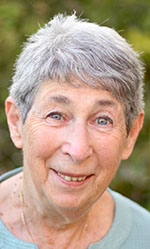By Dorothea Shefer-Vanson

MEVASSERET ZION, Israel — When visiting a friend in the Netherlands he recommended Joseph and His Brothers and I decided to try and get hold of it. This was not as easy as it sounds, and it was only through a special search feature of the tried and trusted Bibliophile company that I managed to buy it and have it delivered to the hotel in London when I was there a few months ago.
The book itself is large and heavy, comprising almost 1,500 closely-printed pages on extra thin paper and weighing more than one kilogram, so it isn’t easy to hold for long. In addition, because of the closely-printed text, which strains the eyes, it is difficult to read for an extended period of time. Fortunately, each chapter is divided into segments, enabling this reader to take frequent breaks as she proceeds with the task of devouring the formidable text.
Thomas Mann, whose portrait adorns the cover, set himself the monumental task of tackling the stories of the ancestors of the Jewish people and setting them in their wider context, thereby resurrecting them in a way that draws on archeology, history, geography, comparative religions, philosophy, and psychology to portray the events described in a skeletal manner in the Bible.
The book has been expertly translated from German by John E. Woods. As one could expect from a Nobel Prize-laureate of Thomas Mann’s stature (Buddenbrooks, The Magic Mountain and others), the writing is dense and full of allusions to aspects of human life that are not immediately associated with the bare bones of the text we find in the Torah.
Mann describes in the Introduction that it took him over 16 years to write the book, in the course of which he was obliged to move to a different country more than once due to the political tempests that engulfed Europe in the 1930s and 1940s. He eventually made his home in California, where he was able to complete the task he had set himself.
The book, which does not strictly follow the chronological account of events given in the Bible, consists of four separate volumes: The Stories of Jacob, Young Joseph, Joseph in Egypt, and Joseph the Provider. In the Introduction, Mann writes of his journey from Sweden, where he had given some lectures, to California via London: “…I had with me a great many papers, lecture manuscripts, and books that became an object of tedious inspection at the camouflaged London airport well outside the city. An object of particular interest and misgiving in the inspectors’ eyes was a sketch of the seating arrangements for a luncheon that Goethe gives for the sweetheart of his youth at his home on the Frauenplan in Weimar. It was suspected to be of strategic value, and I had to offer a brief lecture on my novel to convince these people that the sketch was completely harmless.”
The image this conjures up of British border officials trying to come to grips with the idea of who and what Goethe was, as well as with his project of giving a luncheon and arranging a table plan is pure comedy worthy of Monty Python’s Flying Circus.
There are occasional flashes of dry humor in Mann’s account of the biblical stories, but essentially the narrative he provides goes far deeper into the human psyche than appears on the surface. As I continue to plough my way through the dense and complex text, I am continually assailed by a sense of astonishment at the depths of understanding that Mann has managed to plumb.
*
Dorothea Shefer-Vanson is an author and freelance writer based in the Jerusalem suburb of Mevasseret Zion, Israel.